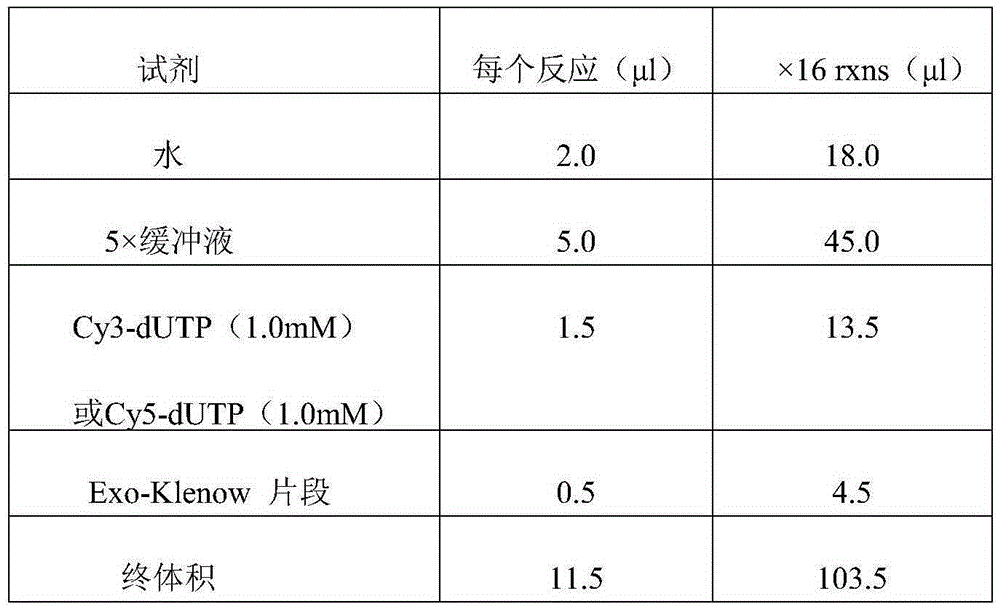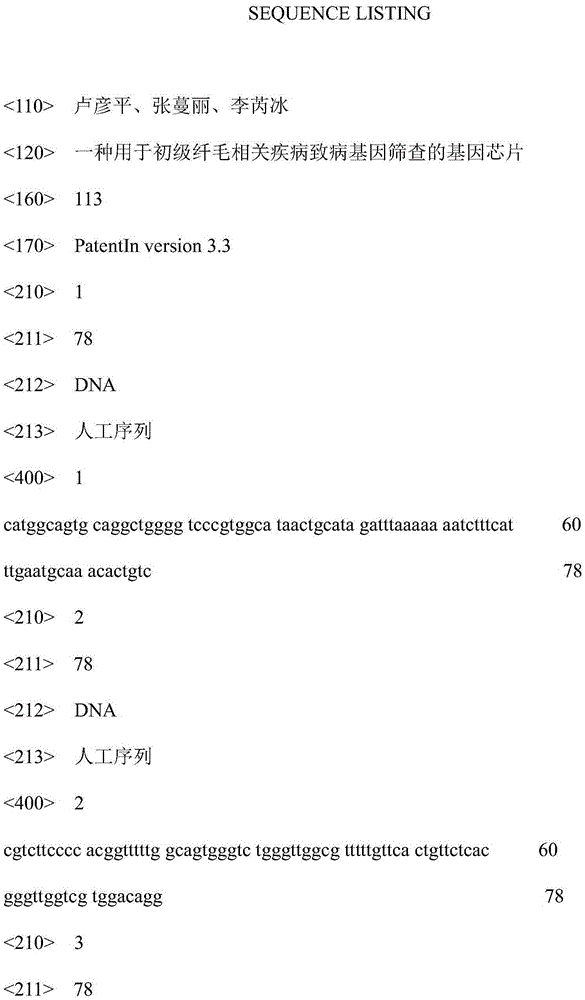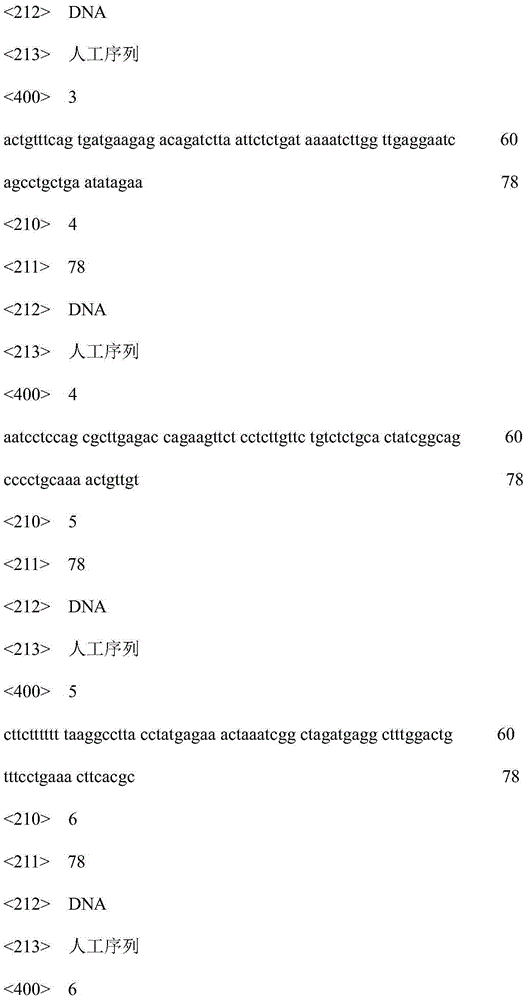Gene chip for screening primary cilium-related disease causative gene
A gene chip and pathogenic gene technology, which is applied in the field of gene chip for the screening of pathogenic genes of primary cilia-related diseases, can solve the problems of diagnosis dependence, phenotype diagnosis interference, etc.
- Summary
- Abstract
- Description
- Claims
- Application Information
AI Technical Summary
Problems solved by technology
Method used
Image
Examples
Embodiment 1
[0031] Preparation of Example 1 Gene Chip and Preservation of Probes
[0032] 1. Probe synthesis
[0033] Probes of corresponding lengths were designed and synthesized by using in situ synthesis technology according to the probe sequences. The probe sequences are shown in SEQ ID NO.1-113, and the synthesized probes were purified by HPLC technology.
[0034] 2. Elution probe
[0035] Soak the chip with the probe in 5ml of 35% ammonia water, seal it and place it on a constant temperature rotator, rotate for more than 2 hours, elute the probe from the chip, and transfer it to centrifuge tube 2.0.
[0036] 3. Centrifugal drying
[0037] The eluted probe was concentrated in a rotary vacuum using a vacuum concentrator, and stopped when there was no liquid.
[0038] 4. Dissolution of the probe
[0039] Add 200 μl of RNA and DNase-free deionized water to the concentrated probe tube, vortex for more than 1 minute, and combine all dissolved probes into one tube for storage.
[0040...
Embodiment 2
[0044] The usage method of embodiment 2 gene chip
[0045] (1) Preparation of sample DNA fragments
[0046] The blood of patients and normal people was taken, and the whole genome DNA (gDNA) was extracted by conventional methods.
[0047] Adjust the temperature of the water bath to 37°C and 65°C, dissolve 10× buffer C (see the table below), vortex briefly and then centrifuge for a few seconds.
[0048] For each reaction, gDNA was added to an appropriate nuclease-free PCR tube and nuclease-free water was added to bring the reaction volume to 10.1 μl.
[0049] Prepare the enzyme digestion mix master solution on ice, and add the reagents in the order listed in Table 1:
[0050] Table 1
[0051] Reagent
Each reaction (μl)
×16rxns(μl)
water
1.0
17.0
[0052] 10× Buffer C
1.3
22.1
Acetylated BSA (10μg / μl)
0.1
1.7
Alu I (10U / μl)
0.25
4.25
Rsa I (10U / μl)
0.25
4.25
final vol...
Embodiment 3
[0081] Example 3 Detection Accuracy of Gene Chips to Primary Ciliary-Related Disease-causing Genes
[0082] 1. Selection of experimental subjects: 50 cases with clinical manifestations of primary cilia-related diseases were selected as test subjects, and the causative genes of the above test subjects have been determined using gene expression profiling and gene sequencing techniques.
[0083] 2. Utilize the gene chip of the present invention to detect the pathogenic gene of the case
[0084] According to the method described in Example 2, the pathogenic genes of the above cases were determined. The results show that: the gene chip containing the probe sequence shown in SEQIDNO.1-113 detected the disease-causing genes of 50 cases of patients with the same detection results obtained by using gene expression profile and gene sequencing technology, the gene chip is related to the primary cilia The detection accuracy of disease-causing genes is 100%.
[0085] 3. Comparative exper...
PUM
 Login to View More
Login to View More Abstract
Description
Claims
Application Information
 Login to View More
Login to View More - R&D
- Intellectual Property
- Life Sciences
- Materials
- Tech Scout
- Unparalleled Data Quality
- Higher Quality Content
- 60% Fewer Hallucinations
Browse by: Latest US Patents, China's latest patents, Technical Efficacy Thesaurus, Application Domain, Technology Topic, Popular Technical Reports.
© 2025 PatSnap. All rights reserved.Legal|Privacy policy|Modern Slavery Act Transparency Statement|Sitemap|About US| Contact US: help@patsnap.com



